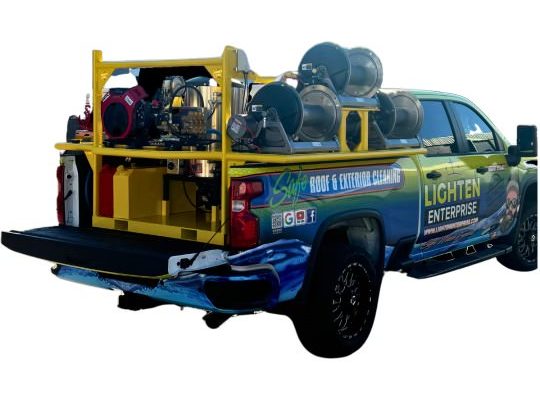In a highly competitive industrial landscape, efficiency, flexibility, and tailor-made solutions often separate thriving companies from average ones. One such solution that’s gaining traction across multiple sectors is Custom mobile skids. These units combine modular design with mobility, enabling businesses to deploy complex systems swiftly and cost-effectively in the field. In this article, you’ll learn:
• What exactly custom mobile skids are
• Key benefits of using them
• Typical applications across industries
• Design and engineering considerations
• Best practices for selecting and integrating a skid
• Real-world examples and case studies
• Maintenance, scaling, and lifecycle planning
By the end, you’ll see why investing in Custom mobile skids can give your business a distinct operational advantage.
1. Understanding Custom Mobile Skids
1.1 Definition and Concept
A skid is essentially a self-contained system or module built within a frame (often steel or aluminum) that can house pumps, piping, instrumentation, tanks, valves, and other equipment. When built for mobility—i.e. transportable, mounted for relocation or integration into trucks/trailers—they are called mobile skids. When tailored specifically for a client’s processes, those units are Custom mobile skids.
The idea is to combine modular, factory-built systems with on-site adaptability. These units are sometimes likened to “systems in a box” or “plug-and-play process modules,” allowing them to be installed or relocated more rapidly than traditional on-site “stick-built” projects.
1.2 How Customization Differentiates from Off-the-Shelf Units
While off-the-shelf skids follow standard dimensions, ratings, and configurations, Custom mobile skids relax those constraints. You’re not forced to accept a one-size-fits-all design. Instead, the skid can be engineered to your:
• Preferred footprint and frame shape
• Required flow rates, pressures, pump types
• Electrical or control systems
• Instrumentation, sensor layout, and piping runs
• Material choices (e.g. stainless steel, coated steel)
• Integration with other systems (for example, trailers, shipping containers, or existing vehicles)
Because they’re mobile, Custom mobile skids are especially valuable for operations that move between sites, face remote locations, or need rapid deployment.
2. Benefits of Custom Mobile Skids
2.1 Faster Deployment & Reduced Site Disruption
One of the biggest advantages of Custom mobile skids is that much of the work is done off-site in a controlled environment. This reduces on-site labor, minimizes scheduling conflicts, and lowers weather or safety risks. Once the skid arrives, it can be “plugged in” more quickly.
2.2 Cost Efficiency & Predictability
Because the design is solidified early, cost overruns and surprises during on-site execution drop significantly. You avoid the hidden costs and delays of field fabrication.
2.3 Scalability and Modular Expansion
Many Custom mobile skids are built with modular expansion in mind. You can add extra modules, additional pumps, or instrumentation later without redesigning the entire system. This gives you a future-proof framework.
2.4 Portability & Flexibility
In industries like oil & gas, wastewater, chemical processing, or cleaning services, demand locations often shift. A skid that can be relocated (or redeployed) means you don’t lose your capital investment when your field of operations changes.
2.5 Quality Control & Testing Before Delivery
Factory conditions allow for rigorous testing, quality assurance, and debugging before delivery. That means when the Custom mobile skid arrives on site, it’s already proven, reducing commissioning issues.
2.6 Safety, Compliance & Standardization
By centralizing design and assembly, it’s easier to enforce safety standards, regulatory compliance, and consistent build quality across multiple deployments.
3. Common Applications & Use Cases
Here are several sectors where Custom mobile skids have demonstrated high value:
3.1 Pressure Washing, Exterior Cleaning & Surface Services
The cleaning industry often uses skid-mounted pressure washers, chemical injection systems, and pure water systems. Many firms build Custom mobile skids for integration into vans, trailers, or cleaning rigs. For example, J.Racenstein’s ProTool Custom Skids are tailored for pressure washing, soft washing, and window cleaning, with modular plumbing, pump systems, chemical metering, hose reels, etc.
3.2 Oil & Gas, Petrochemical & Chemical Processing
Processing units, filtration systems, chemical dosing, or water treatment modules are frequently housed in Custom mobile skids so they can be relocated as field sites change. The skid approach simplifies transport, reduces site labor, and enhances modular flexibility.
3.3 Water Treatment, Filtration & Reverse Osmosis
Mobile plants for reverse osmosis (RO), UV disinfection, or filtration can be constructed on skid frames. These setups are often shipped to remote locations (e.g. mining sites, coastal plants) or temporary installations.
3.4 Lube, Fuel & Service Trucks
Some service trucks mount Custom mobile skids as lube or fuel modules that can be removed or replaced. Companies like Taylor Pump & Lift offer custom lube skid units built to specific requirements (size, reels, paint, configurations) for service vehicles.
3.5 Firefighting, Agricultural Spraying & Mobile Units
Skids that house pumps, hoses, and chemical delivery systems can be mounted on trucks or trailers for fire suppression, irrigation, or spraying. Custom builds allow adaptation to tank sizes, control systems, and pump demands.
4. Key Design & Engineering Considerations
When you decide to adopt Custom mobile skids, careful upfront design is critical. Below are guiding principles to follow.
4.1 Frame & Structural Design
• Choose a frame material (steel, stainless steel, aluminum) based on weight, corrosion, and strength needs
• Include lifting points, mounting holes, vibration dampening as needed
• Ensure structural integrity under full load (fluids, dynamic loads, shocks during transport)
4.2 Piping, Flow Paths & Layout
• Optimize piping runs for minimal pressure drop and interference
• Use color-coded or labeled piping for clarity
• Include isolation valves, bypass lines, manifolds, and drain paths
• Plan for maintenance access to instruments, valves, and pumps
4.3 Equipment & Pump Selection
• Match pump(s) to your required flow, pressure, and duty cycle
• Choose compatibility (electric, diesel, hydraulic) as suited to your power sources
• Consider redundancy if continuous operation is critical
4.4 Control Systems & Instrumentation
• Embed sensors for pressure, temperature, flow, level, and alarms
• Use PLCs or microcontrollers for automation, alerts, and remote monitoring
• Route wiring neatly (within conduit or cable trays) to avoid interference
4.5 Tanking & Fluid Management
• For units requiring tanking (water, chemicals, fuel), design in baffles, overflow protection, and fill/drain points
• Choose materials (poly, stainless, coated steel) appropriately
• Provide level sensors, venting, and secondary containment if needed
4.6 Integration with Vehicles or Trailers
• If mounting in/onto trucks or trailers, ensure frame dimensions, anchoring, and weight distribution are compatible
• Consider modular connections (quick-disconnects, flanged couplings) for ease of install/removal
4.7 Testing & Quality Assurance
• Pressure test the plumbing, leak test, run pump cycles, simulate duty loads
• Use vibration tests, thermal testing, and control logic validation
• Document test procedures and provide “factory acceptance test” (FAT) reports prior to shipping
5. Best Practices for Choosing & Deploying Your Custom Mobile Skid
5.1 Start with a Detailed Requirements Document
Define your functional specs:
• Flow rates, pressures, types of fluids or chemicals
• Operating environments (temperature, humidity, corrosivity)
• Power availability, footprint constraints, and mobility needs
5.2 Partner with a Specialist Builder
Look for fabricators experienced in mobile skid design and industrial systems. Ask for:
• Portfolios
• References
• Past projects
5.3 Emphasize Modularity & Expandability
• Design for future expansion: extra skid space, mounting points, or spare plumbing ports
5.4 Plan for Transport, Shock & Vibration
• Use vibration isolators, shock mounts, and secure all components
• Design piping supports to prevent shifting loads stressing joints
5.5 Commissioning & Field Validation
• Connect utilities
• Check for leaks
• Measure performance vs design output
• Calibrate instrumentation
• Validate safety interlocks
5.6 Maintenance & Lifecycle Planning
• Ensure maintenance access (removable panels, accessible valve positions)
• Keep spare parts lists, wiring and piping schematics
• Plan preventive maintenance schedules
6. Real-World Example: ProTool Custom Skids (via J.Racenstein)
J.Racenstein markets ProTool Custom Skids emphasizing that each skid is built around the user’s specifications rather than forcing a standard design. They offer skids specialized for pressure washing, soft washing, window cleaning, or hybrid combinations.
Some highlights from their approach:
• Corrosion-resistant frames and weatherproof electricals
• Flexible plumbing layouts and modular hose reel positioning
• Optional remote control for pump and reel activation
• Modular expansion to accommodate business growth
• Pre-testing and quality assurance before delivery
7. Overcoming Common Challenges
7.1 Higher Upfront Cost
• Custom engineering costs more at first, but you save on field work, commissioning, and lifespan
7.2 Complexity of Integration
• Plan interfaces and use standardized connectors to integrate with existing systems
7.3 Transportation Limits
• Design within transport regulations (width, weight, lifting points)
7.4 Maintenance Support in Remote Locations
• Use robust designs and standardized spare parts for easier servicing
8. Future Trends & Innovations
• IoT & Remote Monitoring for predictive maintenance
• Hybrid energy systems (battery, solar) reducing diesel dependence
• 3D printing of custom brackets and parts
• Plug-and-play interchangeable modules
• Autonomous or unmanned skid deployments
9. Summary & Take-Home Message
Custom mobile skids blend the benefits of modular fabrication with on-site adaptability. They accelerate deployment, improve quality assurance, and support future expansion. While the engineering upfront may require more planning, the operational benefits—flexibility, mobility, and cost predictability—often make them a compelling choice for many industrial and service applications.




